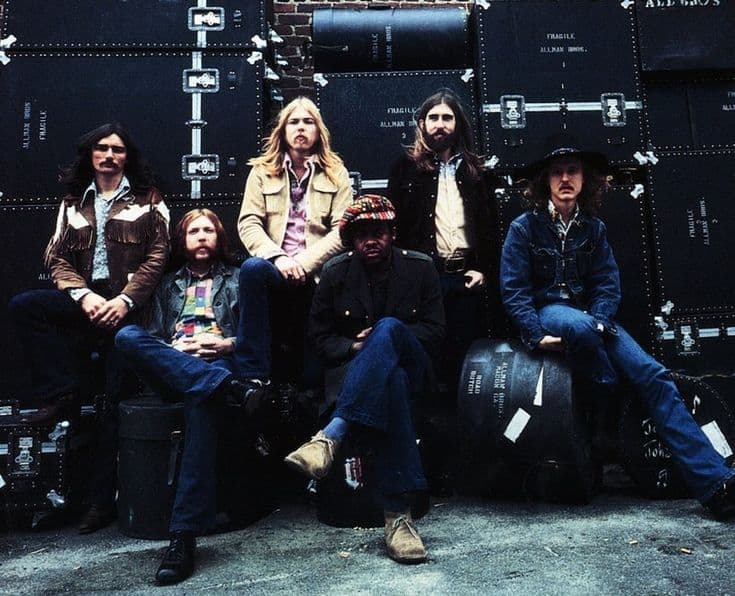
“One Way Out” – The Allman Brothers Band’s Electrifying Live Anthem of Escape
Few songs capture the raw energy of Southern blues-rock quite like “One Way Out” by The Allman Brothers Band. Although it was originally written and recorded by blues musicians Sonny Boy Williamson II and Elmore James, The Allman Brothers gave the track new life with their fiery performances, transforming it into one of their defining live staples. First appearing on their iconic live album Eat a Peach (1972), the song quickly became a fan favorite, known for its high-octane energy and spellbinding guitar interplay.
The essence of “One Way Out” is simple yet compelling: it tells the story of a man trapped in a lover’s apartment, desperately searching for an escape route as her husband returns home unexpectedly. The lyrics are laced with humor and tension, drawing listeners into the character’s predicament:
“Ain’t but one way out, baby, Lord, I just can’t go out that door.”
The playful yet suspenseful narrative gives the song a storytelling quality that aligns perfectly with the band’s bluesy roots, turning it into a crowd-pleaser that resonates with both lovers of the blues and rock enthusiasts alike.
Musically, The Allman Brothers Band inject their signature Southern flair into the track. The live version from Eat a Peach showcases Duane Allman and Dickey Betts trading intricate, slide-driven guitar licks, creating a thrilling back-and-forth that underscores the protagonist’s desperate dilemma. Gregg Allman’s soulful vocals and bluesy organ playing add another layer of depth, while Jaimoe Johanson and Butch Trucks lay down a pulsating dual-drum rhythm that propels the song forward with relentless momentum. The interplay between the instruments—particularly Duane’s searing slide guitar—makes the song feel like a chaotic but exhilarating escape.
The recording of “One Way Out” on Eat a Peach comes from a live performance at the Fillmore East, capturing the magic of the band’s interaction with their audience. The Allmans were known for their improvisational prowess, and this track is no exception—Betts and Allman stretch the guitar solos into mesmerizing jams, building tension with every note. It’s this live energy that makes the song so beloved, as the band takes a traditional blues number and elevates it into something much larger, filled with spontaneity and emotional intensity.
While “One Way Out” wasn’t released as a single, it has become an essential part of the Allman Brothers’ legacy. The track represents their ability to blend blues authenticity with rock power, showcasing the virtuosity of the musicians involved. For fans, hearing the song live became a ritual—a chance to witness the band at their peak, pouring their hearts into every note. It remains a testament to their ability to take familiar material and inject it with a unique spirit, making it entirely their own.
Even decades later, “One Way Out” continues to hold a place in the pantheon of great live rock performances. The song is regularly cited as one of the standout tracks from Eat a Peach, a record that helped solidify the band’s status as Southern rock pioneers. It also serves as a bittersweet reminder of the genius of Duane Allman, whose tragic death in 1971 robbed the world of one of its greatest guitarists just as the band was ascending to greatness.
In conclusion, “One Way Out” encapsulates everything that made The Allman Brothers Band special—their fusion of blues, rock, and jazz; their ability to tell a vivid story; and their unparalleled skill in live performance. It’s a song that feels alive every time it’s played, a burst of energy that invites listeners into a thrilling chase for freedom. For those lucky enough to have heard it performed live, it remains an unforgettable experience.